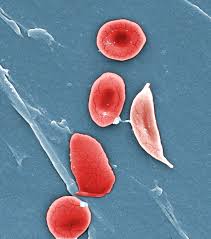Aggregated News

Scientists have long known what causes sickle-cell disease and its devastating effects: a single mutation in one errant gene. But for decades, there has been only modest progress against an inherited condition that mainly afflicts people of African descent.
With advances in gene therapy, that is quickly changing — so much so that scientists have begun to talk of a cure.
In a half-dozen clinical trials planned or underway, researchers are testing strategies for correcting the problem at the genetic level. Already a handful of the enrolled patients, who have endured an illness that causes excruciating bouts of pain, strokes and early death, no longer show signs of the disease.
Among them is Brandon Williams, 21, who lives with his mother in Chicago. Because of his sickle-cell disease, he had suffered four strokes by age 18. The damage makes it hard for him to speak. His older sister died of the disease.
Following an experimental gene therapy, his symptoms have vanished. Life has taken a sharp turn for the better: no more transfusions, no more pain, no more fear...



